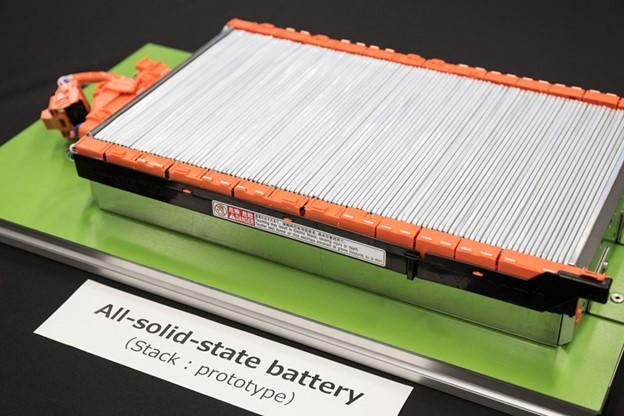
Toyota says it has overcome durability challenges that have hindered development of solid-state lithium-ion batteries.
Toyota has laid out a road map for electric vehicle development that could see solid-state lithium-ion batteries being commercialized by 2027-28, bringing higher energy densities and lower fire risks that could also benefit electric aviation.
The Japanese automaker plans to introduce next-generation electric vehicles in 2026 with battery, aerodynamic and weight improvements that enable a cruise range of 1,000 km (621 mi.), about twice that of its current bZ4X electric sport utility vehicle.
As a first step, Toyota plans in 2026 to introduce a high-performance lithium nickel manganese cobalt (NMC) prismatic battery cell enabling the increased range with a 20% lower cost and a 20-min. fast-change time (from 10-80% state of charge).
The planned second step, in 2026-27, is to launch a cell designed for high-volume production with a new bipolar structure and a lithium iron phosphate (LFP) chemistry. This will provide 20% more range than the current bZ4X but at 40% lower cost, with a 30-min. fast charge.
The final step in the strategy outlined by Toyota is the introduction of all-solid-state batteries, planned for 2027-28. Current lithium-ion batteries use a liquid electrolyte that is flammable, creating a fire risk if there is a short circuit and thermal runaway.
The long-standing problem with solid-state batteries has been low cycle life, but Toyota says it has made a technological breakthrough that overcomes the challenge of battery durability and is accelerating its development as a battery for its electric vehicles.
“We are currently developing a method for mass production, striving for commercialization in 2027-28,” the carmaker says. Targets are a further 20% increase in range and 10% reduction in cost over the 2026 next-generation high-performance lithium NMC cell.
“Also, with an eye to the future, a higher-level specification is under research and development at the same time. This one aims for a 50% improvement in the cruising range,” Toyota says. For aviation, longer driving range translates into higher energy density for greater payload/range performance.
